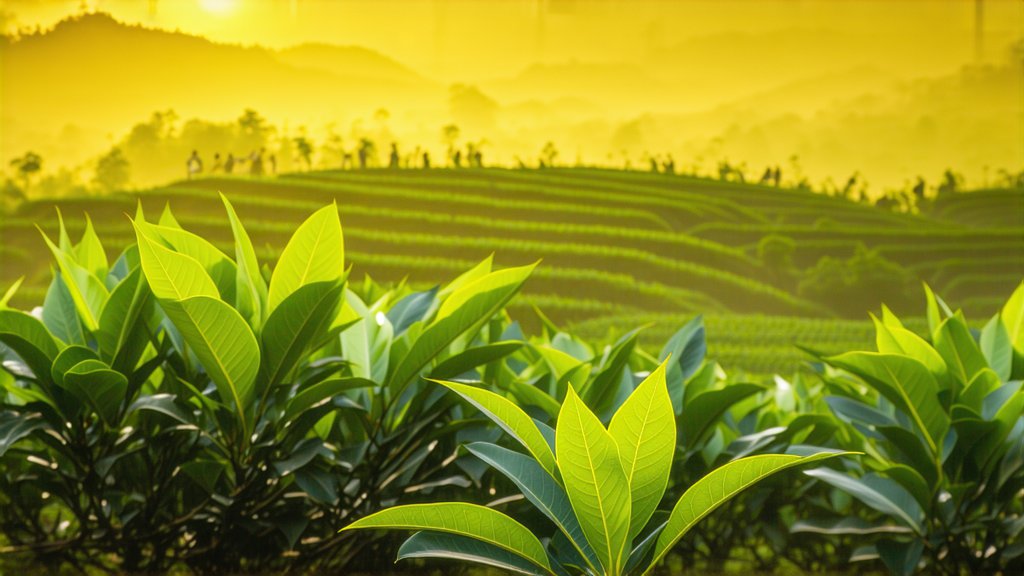
In the heart of China's Fujian province lies a treasure trove of tea history and tradition, embodied in the form of Bai Mudan, also known as the White Peony. This exquisite variety of white tea is not only a testament to the rich heritage of Chinese tea culture but also a symbol of the meticulous artistry that defines its production. As we delve into the world of Bai Mudan, we will explore its historical roots, varieties, unique processing methods, and the nuanced art of its appreciation.
Historical Background
The origins of Bai Mudan can be traced back to the early Qing Dynasty, around 1796, during the reign of Emperor Qianlong. Legend has it that this remarkable tea was discovered by chance when a local official named Wang Zhaoming sought to create a tribute tea for the emperor. In his quest for perfection, he accidentally discovered the unique qualities of the tea made from the buds and young leaves of the Dai Shu Cha tree. The result was a tea so delicate and fragrant that it earned the name "Bai Mudan," meaning "White Peony," after the flower that shares its pure white color and elegant beauty.
Varieties of Bai Mudan
Bai Mudan comes in two primary grades: Baimudan Wangzheng and Baimudan Yinzhen. The former consists of a blend of one bud and two leaves, while the latter is comprised solely of the finest buds. Both grades share the same processing method but differ slightly in appearance and flavor profile. Wangzheng offers a more robust experience with its combination of buds and leaves, whereas Yinzhen is prized for its exceptional purity and refined taste.
Processing Techniques
The magic of Bai Mudan lies not only in its origins but also in the minimal processing it undergoes, which preserves its natural flavors and aromas. The journey from leaf to cup involves several stages:
-
Plucking: Only the youngest shoots, consisting of a single bud and the first two leaves, are carefully handpicked during the spring harvest.
-
Withering: The freshly picked leaves are spread out thinly on bamboo mats or trays under the sun or in shaded areas to allow them to wilt gradually. This process reduces moisture content and initiates enzymatic reactions that contribute to the tea's unique character.
-
Drying: After withering, the leaves undergo a gentle drying process, either through sun drying or low-temperature ovens, to further reduce moisture without damaging the delicate leaves.
-
Sorting and Packing: Once dried, the tea is sorted by hand to remove any imperfections before being packaged for distribution.
This minimal intervention ensures that Bai Mudan retains its inherent freshness, sweetness, and subtle complexity.
Appreciating Bai Mudan
To truly appreciate Bai Mudan, one must engage all senses in a mindful tasting ritual:
-
Visual Appeal: Observe the dry leaves, noting their silvery down and greenish hue, reminiscent of peony petals. The infused liquor should reveal a pale yellow color, akin to aged wine.
-
Aroma: Inhale deeply to detect the tea's fragrance, which combines floral notes with hints of honey and melon, evoking a sense of tranquility and purity.
-
Flavor Profile: Sip slowly to savor the tea's smooth, silky texture and its delicate balance of sweetness and umami. The aftertaste is long-lasting, leaving a refreshing sensation on the palate.
-
Mouthfeel: Pay attention to the tea's body, which should be light yet full, providing a velvety mouthfeel that glides effortlessly across the tongue.
-
Ethereal Experience: Finally, embrace the meditative aspect of drinking Bai Mudan. Let each sip transport you to the misty mountains of Fujian, where the tea grew, fostering a deep connection with nature and tradition.
In conclusion, Bai Mudan stands as a shining example of China's tea mastery, encapsulating centuries of wisdom and craftsmanship in every delicate sip. Its history, varieties, processing techniques, and sensory delights invite enthusiasts worldwide to embark on a journey of discovery and appreciation. Whether you are a seasoned connoisseur or a curious newcomer, Bai Mudan promises an enchanting exploration of the finer things in life.